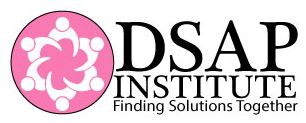Forum Replies Created
-
Repairing a corrupted SQL file manually can be done using the DBCC CHECKDB command in Microsoft SQL Server Management Studio (SSMS). This built-in command helps detect and fix minor inconsistencies in the database. To use it, the database must be set to single-user mode, and the REPAIR_ALLOW_DATA_LOSS option can be used to fix corruption. However, this method has significant limitations. It may result in data loss if the corruption is severe, and in some cases, the database might become inaccessible if the repair process is interrupted. Additionally, running DBCC CHECKDB on large databases can take a long time, affecting server performance. If the corruption is extensive, this method might not be sufficient, and users may need to restore from a backup. Unfortunately, if a recent backup is unavailable or corrupted, data recovery becomes even more challenging.
Using an SQL Recovery Tool provides a more effective and risk-free solution for repairing corrupted SQL files. This tool is designed to recover all database components, including tables, triggers, indexes, and stored procedures, without data loss. Unlike manual methods, it does not require deep technical knowledge and can handle severe corruption cases efficiently. The tool scans the damaged SQL database and retrieves all recoverable data, maintaining the integrity of the file structure. It also allows users to preview the recovered data before saving it, ensuring accuracy. Additionally, the tool supports all SQL Server versions, making it highly versatile for different database environments. With its advanced recovery algorithms, the SQL Recovery Tool offers a faster, more reliable alternative to manual repair methods, minimizing downtime and ensuring that businesses can quickly restore their critical database files without losing valuable information.
Importing OST files to Microsoft 365 can be challenging when using manual methods. One common way is to use Outlook’s Import/Export feature. First, you would need to convert the OST file to PST format by exporting the data from Outlook. Once converted, you can import the PST file into your Microsoft 365 account. However, this manual process is time-consuming and prone to errors. If the OST file is large or contains corrupt data, it can lead to incomplete imports, causing loss of crucial emails, contacts, and calendar entries. Additionally, this process requires Outlook to be installed and configured on your system, adding to the complexity.
Using an OST to PST Converter Tool can help you bypass these challenges. The converter tool simplifies the process by directly converting the OST file into a PST file that is fully compatible with Microsoft 365. This automated solution ensures that all emails, attachments, and other data are intact during the conversion. It eliminates the need for Outlook configuration, reduces the risk of corruption or data loss, and speeds up the process, making it a more reliable and efficient way to import OST files into Microsoft 365.
The IMAP Email Migration Tool is designed to streamline the process of transferring emails between two IMAP-enabled email accounts. This Software provides the best approach to save IMAP email offline providing an effective backup option. This tool allows users to migrate emails while preserving the folder hierarchy and metadata, ensuring no data is lost during the process. It offers advanced filtering options, enabling users to migrate specific emails based on criteria like date range, subject, or sender. With its user-friendly interface and support for various IMAP servers, including Gmail, Yahoo, Outlook.com, and more, this tool provides a reliable and efficient solution for hassle-free email migration.
Converting MSG files to EML format manually involves opening each MSG file in Outlook, then using the “Save As” option to export the email as an EML file. While this method works, it is highly time-consuming, particularly if you need to convert a large number of MSG files. Additionally, it requires Outlook to be installed, and there is a risk of data inconsistency or loss if the process is not performed carefully. This manual approach also lacks advanced features like batch conversion or selective export options.
Using the MSG File Converter simplifies the entire process. This tool allows you to convert multiple MSG files to EML format in one go, saving significant time and effort. It ensures data accuracy, maintains the original formatting, and supports attachments. Its user-friendly interface makes the conversion process straightforward, even for non-technical users. By automating the task, it eliminates the challenges associated with manual conversion methods.
Converting EML files to PDF manually involves opening each EML file in an email client like Outlook or Thunderbird, and then saving or printing it as a PDF individually. This process can be time-consuming and impractical, especially if you need to convert multiple files at once. Additionally, the manual approach may not preserve elements like attachments or certain formatting, resulting in incomplete documents.
Using an EML File Converter tool streamlines the conversion process, allowing you to convert multiple EML files to PDF in one go while preserving attachments, formatting, and metadata. This tool simplifies the workflow, eliminating the need for an email client and ensuring that all data is accurately converted. It’s an ideal solution for professionals looking to archive or share email content in a universally accessible format without the hassle and limitations of manual methods.
Hi
